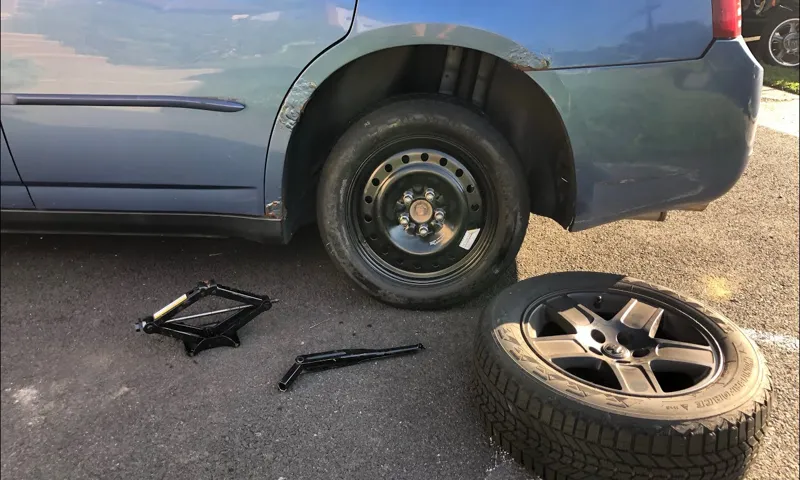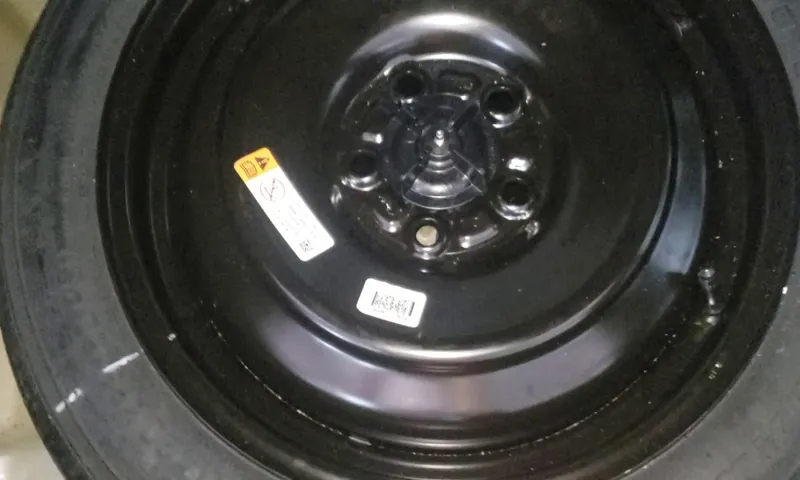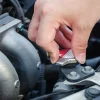Changing a flat tire can be a daunting task if you’re not prepared for it. But sometimes you don’t have a choice, and you need to know how to put on a spare tire. Whether you’re in the middle of nowhere or just cruising down the street, flats can happen anytime and anywhere.
That’s why it’s crucial to learn how to change a tire yourself instead of relying on someone else to do it for you. Not only is it a valuable skill to have, but it can also save you time and money in the long run. So, if you’re in a pinch and need to put on a spare tire, keep reading to learn how.
Table of Contents
Preparation
If you’ve found yourself in the unfortunate situation of needing to put a spare tire on your car, the process may seem overwhelming at first. But fear not – with a little preparation, putting on a spare tire can be a surprisingly easy task. First, ensure that your car is parked safely on a flat surface away from any traffic.
Next, locate your spare tire and the necessary tools, which should include a jack, lug wrench, and wheel chocks or bricks. It’s important to follow your car’s manual for specific instructions on where to place the jack and how to position the lug wrench to remove the old tire. Once the old tire has been removed and the spare is in place, double-check that all lug nuts are tightened evenly and securely before lowering the jack and hitting the road again.
With a bit of preparation, you’ll be back on your way in no time.
– Park vehicle on flat surface
If you’re getting your vehicle ready for service or maintenance, it’s important to park it on a flat surface before beginning any work. This ensures that the vehicle is stable and won’t roll or shift as you work on it. Even a slight incline or decline can make a big difference, so it’s best to find a completely level spot to park your car.
A tilted car can cause problems with fluid levels, suspension, and other components. Additionally, you’ll want to make sure that the car is in park or the emergency brake is engaged before getting started. This simple step can save you a lot of trouble in the long run and help you get the job done quickly and efficiently.
So, take a few extra minutes to find that flat spot and double-check that your car is secure before diving into your next project.

– Engage emergency brake
When it comes to safe driving, preparation is key. One essential step is engaging your emergency brake. This extra measure of security will prevent your vehicle from rolling away or sliding on inclines when parked.
Before engaging the brake, make sure your car is in “Park” or in gear, depending on your vehicle’s transmission. When you pull up the brake lever or push down the brake pedal, make sure it is secure and holding your vehicle in place. It’s important to make this a regular habit and check your brake periodically to ensure it is functioning correctly.
By taking this simple step, you can rest assured that your vehicle is secure and you are taking the necessary precautions to keep yourself and others safe on the road. So, next time you park your car, remember to engage your emergency brake for maximum safety.
– Locate spare tire and tools
When you’re out on the road, it’s important to be prepared for anything. One crucial step in this preparation is locating your spare tire and tools. Many people overlook this important step, assuming they won’t need to use the spare or simply forgetting where it’s located.
But in the event of a flat tire or other issue, having access to your spare tire and the necessary tools can make all the difference. So take a few minutes to locate your spare tire and make sure you have all the tools you need to change it out. Trust me, you’ll be grateful you did if the situation arises.
And remember, always prioritize your safety and the safety of those around you when changing a tire on the side of the road.
Removing the Flat Tire
When you experience a flat tire, it’s important to know how to remove it and replace it with your spare. Understanding how to do this could save you time and money. First, you need to locate the tools and the spare tire in your vehicle.
Most vehicles come with a jack and a lug wrench that you will need. Once you have located these items, place the jack under your car’s lift point, which is often marked with an arrow or a triangle on the body of the vehicle. As you raise the jack, make sure it is stable and secure before loosening the lug nuts with your wrench.
Then, remove the flat tire and replace it with your spare, tightening the lug nuts in a star pattern, which will ensure even pressure. Finally, lower the jack and make sure that the lug nuts are all tightened securely. Remember that spare tires are generally intended as temporary solutions and should not be driven on for extended periods of time or at high speeds.
Knowing how to change a flat tire can be a valuable skill to have.
– Loosen lug nuts with wrench
Removing a flat tire can be a daunting task, especially for those who aren’t familiar with the process. One of the most crucial steps in getting the tire off is loosening the lug nuts with a wrench. The lug nuts typically hold the tire in place and may be quite tight, so using a wrench can help make the process easier.
It’s essential to turn the wrench in a counterclockwise direction to loosen the lug nuts. Remember to apply enough pressure and use your hand or foot to keep the wrench steady, as this will prevent it from slipping off and causing an injury. Once the lug nuts are loose enough, you can proceed with jacking up your vehicle and removing the flat tire.
It’s always advisable to follow manufacturer recommendations and guidelines when changing tires to ensure the process is done safely.
– Use jack to lift car off the ground
If you’re ever stuck on the side of the road with a flat tire, don’t panic! With the right tools and a little know-how, you can swap out that deflated tire in no time. First, make sure you’re in a safe location away from traffic. Then, fetch your spare tire, lug wrench, and jack.
Place the jack under a sturdy part of the car’s frame and use the lug wrench to loosen the lug nuts on the flat tire. With those loosened, begin jacking up the car until the flat tire is off the ground. Remove the lug nuts entirely and carefully slide the flat tire off.
Voila! You’re one step closer to getting back on the road. Just remember to take your time and work safely as you go.
– Unscrew lug nuts and remove flat tire
Removing the flat tire is an essential skill that every driver should know. Firstly, park your vehicle on a flat, stable surface and engage the parking brake. Then, use a lug wrench to loosen the lug nuts on the tire.
To make this task easier, prop up the opposite end of the car using a jack. Once the tire is off the ground, you can now unscrew the lug nuts and remove the flat tire. Make sure to carefully place the tire aside to avoid any potential safety hazards.
You will now have a flat tire that you can replace with either the spare tire or a new one. Remember to securely tighten the lug nuts when putting the new tire on, and it’s important to take your old flat tire to a tire repair shop to detect any underlying issues. By following these simple steps, you can quickly and safely remove the flat tire and get back on the road in no time.
Installing the Spare Tire
When it comes to replacing a flat tire with a spare, many people may wonder, “how does a spare tire go on?” The process can understandably seem daunting, but with a few simple steps, it can be a relatively easy fix. First, locate the spare tire, which is usually stored in the trunk or underneath the vehicle. Next, use a lug wrench to loosen the lug nuts on the flat tire, but do not remove them completely just yet.
Then, place a jack under the car and raise it so the flat tire is off the ground. Once the flat tire is removed, position the spare tire onto the hub and hand-tighten the lug nuts. Lower the jack until the spare tire is on the ground and then use the lug wrench to fully tighten the lug nuts in a star pattern.
Finally, double-check that all lug nuts are tightened correctly and secure before driving. With these simple steps, anyone can safely and easily install a spare tire in no time!
– Place spare tire on hub
Once you have retrieved the spare tire and tools from your trunk, the next step is to place the spare tire onto the hub. First, locate the studs on the hub of your vehicle and line up the holes on the spare tire with these studs. Then, slide the spare tire onto the hub, making sure it fits snugly.
Use your hand to tighten the lug nuts as much as possible, but resist the urge to use any tools just yet. Once the spare tire is in place, you can lower your vehicle back down to the ground and use a lug wrench to tighten the lug nuts. Remember to tighten in a diagonal pattern to ensure even distribution of pressure.
With the spare tire now securely installed, you can drive to the nearest mechanic or tire shop to get your flat fixed or have a new tire installed. Don’t forget to check the spare tire’s pressure periodically and replace it if it becomes worn or damaged. As always, it’s better to be prepared for the unexpected, so keep your spare tire in good condition and ready for use at all times.
– Tighten lug nuts by hand
Installing a spare tire can be a daunting process, especially for those who have never done it before. However, if you find yourself in a situation where you have a flat tire and need to replace it with the spare, it’s important to follow the correct steps to do so safely and effectively. One of the most crucial steps in the installation process is tightening the lug nuts by hand.
using a lug wrench can help you remove and replace the lug nuts, but it’s important to ensure that they are properly tightened by hand afterward. This helps to prevent the wheel from becoming loose while you are driving, which could lead to a dangerous situation. Make sure to use a crosswise motion when tightening the lug nuts by hand to ensure that they are evenly tightened.
By following these steps, you can safely and securely install your spare tire and get back on the road in no time.
– Use wrench to fully tighten lug nuts
Installing a spare tire can be a daunting task for some people, but with a little bit of knowledge and confidence, it can be accomplished quickly and easily. The first step in installing a spare tire is to locate the spare tire and the tire changing tools, which are usually located in the trunk. Once you have retrieved the spare tire and tools, place the jack under the car’s frame near the flat tire.
It’s important to note that the jack should only be used on a flat, stable surface and never on an incline. After the jack is in place, start to raise the car off the ground until the flat tire is about six inches off the ground. Next, use the tire iron to loosen the lug nuts on the flat tire.
Once all of the lug nuts are loose, carefully remove the tire from the car and replace it with the spare tire. Use the tire iron to screw on the lug nuts, and then use a wrench to fully tighten them. It’s essential to make sure that the lug nuts are tight enough to prevent the tire from coming loose while you’re driving.
Finally, lower the car back to the ground, remove the jack, and store the flat tire and tools. By following these simple steps, you can change a flat tire quickly and safely.
– Lower vehicle to the ground
Lowering your vehicle to the ground is a crucial step in installing a spare tire. First, find a safe spot to change the tire and turn on your hazard lights. Next, use your tire iron to loosen the lug nuts on the flat tire.
Once they’re loose, use a jack to lift the car off the ground until the tire is a few inches off the road surface. Then, remove the lug nuts and slide the flat tire off the studs. Put the spare tire in its place and replace the lug nuts, tightening them as much as you can.
Finally, lower your vehicle back down to the ground and use the tire iron to finish tightening the lug nuts. Double-check that they’re secure and make sure you store your flat tire, jack, and tire iron before driving away. Remember, safety first!
Final Checks
If you find yourself with a flat tire while on the road, it’s important to know how to replace it with a spare tire. First, make sure you’re in a safe location away from traffic. Locate your car’s spare tire, which is usually located in the trunk or under the car.
Remove the hubcap or wheel cover if necessary and use a lug wrench to remove the lug nuts. Once you’ve removed the flat tire, carefully align the spare tire with the wheel studs and hand-tighten the lug nuts. Lower the car, then use the lug wrench to securely tighten the lug nuts in a star pattern.
Before getting back on the road, make sure to double-check the tire pressure on the spare tire to ensure it’s safe to use and within the recommended limits. Knowing how to replace a tire with a spare can save you time and money in case of an emergency.
– Check tire pressure
When it comes to preparing for a long road trip, there are a few final checks that you will want to make before hitting the open road. One important task to complete before embarking on your journey is to check the tire pressure of your vehicle. Proper tire pressure is vital for several reasons.
For one, it helps to ensure that your tires will wear evenly, which can extend their lifespan and save you money in the long run. Additionally, maintaining proper tire pressure can also have an impact on your car’s fuel efficiency. So, before you head out on your adventure, take a few minutes to check your tires and make any necessary adjustments to ensure that they are properly inflated.
With this small but important task complete, you can hit the road with confidence and enjoy a safe, comfortable trip.
– Verify lug nuts are tight
As you approach the end of your vehicle maintenance routine, it’s crucial to make some final checks to ensure everything is in good order. One essential check you must always perform is to verify that your lug nuts are tight. These small but mighty pieces of hardware hold your wheels onto your vehicle, so it’s crucial to ensure they’re snugly secured before hitting the road.
Loose lug nuts can lead to your wheels coming off while driving, which can be incredibly dangerous. To avoid such a situation, use a torque wrench to tighten each lug nut per the manufacturer’s specifications. Don’t rely on your strength alone to get them tight enough.
It’s better to be safe than sorry when it comes to such a vital aspect of your car’s safety. By taking the time for this final check, you can have peace of mind knowing you’re driving safely.
– Store flat tire and tools properly
Before hitting the road, it’s important to do some final checks to ensure a smooth and safe ride. One of the crucial things to remember is to store the flat tire and tools properly. Make sure that the tire is secured, either in the trunk or on the roof rack, if you have one.
Tools, such as a lug wrench, jack, and tire inflator, should also be kept in a safe and accessible place. Imagine being stranded on the side of the road with a flat tire and realizing that you can’t find your tools. That’s why it’s important to keep them in a designated spot that you can easily locate.
Not only does storing these items properly help you during emergencies, but it also ensures that they don’t roll around and possibly cause damage to your car or injure passengers. So before you drive off, make sure everything is stored safely and securely.
Conclusion
In conclusion, putting on a spare tire is like performing a magic trick. With just a few twists and turns, a flat tire disappears and a spare one takes its place. It’s a skill that every driver should learn, because you never know when you’ll need to pull a tire out of your trunk and make it work like new.
So the next time you’re faced with a flat tire, don’t panic – just remember that with a spare tire and a bit of know-how, you can make your car road-worthy again in no time!”
FAQs
What is a spare tire and why do we need it?
A spare tire is an extra wheel that is carried in a vehicle for emergency use in case of a flat tire. It is important to have a spare tire in case of a tire blowout or puncture, as driving on a flat tire can cause damage to the wheel and suspension.
How do you know when you need to replace a spare tire?
Spare tires should be replaced at least every 6 years, regardless of how often they have been used. Signs that a spare tire needs to be replaced include cracks in the rubber, visible damage to the wheel, and a loss of air pressure.
How do you properly inspect and maintain a spare tire?
To properly inspect and maintain a spare tire, make sure to check the air pressure regularly and keep it inflated to the recommended level. Also, examine the tire for any signs of damage or wear, such as cracks or uneven wear patterns. Rotate the spare tire with the other tires on the vehicle to ensure even wear.
Can you use a spare tire as a regular tire?
Spare tires are designed for temporary use only and should not be used as regular tires. They are typically smaller and have a different tread pattern than regular tires, which can affect the vehicle’s handling and performance.
How do you change a flat tire and replace it with a spare tire?
To change a flat tire and replace it with a spare tire, follow these steps: 1) Find a safe location off the road, 2) Use a wrench to loosen the lug nuts on the flat tire, 3) Use a jack to lift the vehicle and remove the flat tire, 4) Place the spare tire onto the wheel studs and tighten the lug nuts, and 5) Lower the vehicle to the ground and tighten the lug nuts again.
How long can you drive on a spare tire?
Spare tires are designed for temporary use only and should not be driven on for an extended period of time. The recommended distance to drive on a spare tire is usually around 50 miles, but it is important to check the manufacturer’s guidelines for the specific make and model of the tire.
How do you store a spare tire when not in use?
To store a spare tire when not in use, keep it in a cool, dry place away from direct sunlight or sources of heat. Make sure to keep it properly inflated and check it regularly for any signs of damage or wear. It is also recommended to rotate the tire with the other tires on the vehicle to ensure even wear.



